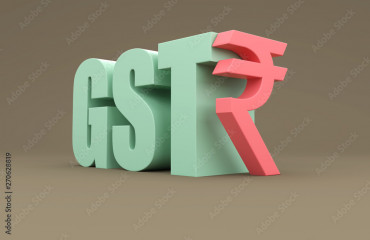
Next week will see the first budget of the new government being presented. As is traditional for this time, newspapers and opinion columns are full of suggestions on what the Union Budget should focus on. It comes at a very interesting time for the government.
Next week will see the first budget of the new government being presented. As is traditional for this time, newspapers and opinion columns are full of suggestions on what the Union Budget should focus on. It comes at a very interesting time for the government.
On one hand, there is an 'embarrassment of riches,' with rapid growth in both direct and indirect taxes, high and stable economic growth, and moderate inflation—all of which suggest that the economy is in a sweet spot with enormous potential for expansion.
Alongside these riches, there are many signs of simmering discontent, as indicated by the government's recent electoral performance, urban middle-class angst over an 'unfair' tax burden, and other indicators.
The government has taken a number of steps over the last ten years to mitigate the burden of taxes. Take GST, for instance. A Reserve Bank of India study shows that the effective weighted average tax rate had fallen to 11.6% by 2019 from 14.4% when GST was launched, which was in turn lower than the 'revenue neutral rate' of 15.3% estimated by the Subramaniam Committee.
Also read: Agricultural income taxable under certain conditions
Similarly, the 2019 cut in corporate tax rates to 25% or less made India competitive vis-a-vis other leading economies. It is in this background that a demand has arisen for a reduction in personal income tax rates. This demand, though, stands in conflict with a significant concern raised over rising inequality in India.
The government, in order to tread a balance between these concerns, has introduced an alternate income tax regime with limited exemptions and lower slab rates.
It is in this context that the blanket exemption provided to taxes on agricultural income becomes an issue of concern. The third Tax Administration Reform Commission Report (2014) noted that "agricultural income of non-agriculturists is being increasingly used as a conduit to avoid tax and for laundering funds."
The principal argument for why agricultural income is exempt from income tax is that such earnings are covered by the State List under entry No. 46 in the Constitution of India, and thus only state governments have the authority to enact legislation on its taxation.
In addition, it is also pointed out that agriculture is a high-risk profession (subject to very high variability in output and prices), with small operational holdings. The National Sample Survey Situation Assessment of Farmers in 2019 pointed out that over 83% of agricultural households possessed less than 1 hectare of land, with the average holding being 0.5 hectares.
Also read: New regime, new way: budget shines light on computing tax on agri income
Small landholdings constrain farmers from adopting risk diversification techniques available to corporate entities. It is also worth noting that the average monthly income of an agricultural household in 2018-19 was just ₹10,218, as estimated.
Insofar as these arguments are concerned, we may note the following. First, the GST experience has demonstrated that if the Union and state governments work together in a spirit of cooperative federalism, constitutional structures are not an impediment to reform.
Second, a proper tax regime could address concerns of low income and high risks in agriculture through appropriate thresholds for tax exemption. These, however, will need to be evolved through a dialogue with all relevant stakeholders.
A more immediate line of reform which could plug the loophole pointed out by the Tax Administration Reform Commission would be to address the tax exemption being taken by non-agricultural establishments claiming large agricultural incomes.
Let us understand this better. In 2019, India's Comptroller and Auditor General (CAG), in its audit of the direct tax department, undertook an assessment of the exemptions claimed for agricultural income. For the purposes of this audit, the CAG examined a sample of returns with agricultural income claims greater than ₹5 lakh.
A sample of 6,778 cases were examined by the audit team. The report, whose details are available in Report No. 9 of 2019 (Direct Taxes), has some interesting observations.
The report points out that 22.5% of the cases examined pertain to those where exemptions were allowed without verification of supporting documents.
There were significant data-entry errors in cases where agricultural incomes of over ₹1 crore were reported. In addition, the descriptive data showed that 10.7% of the cases relate to registered companies, which were allowed an income exemption of nearly ₹1,161.5 crore (which was 45.6% of the total agricultural income in the sample).
Such a large exemption to corporate entities is particularly problematic given that these entities have also benefitted from a reduction in corporate tax rates.
Also read: Why India should tax agricultural income
An immediate step towards eliminating the country's agricultural income tax exemption would be to restrict its use by companies. An article in Business Standard in 2016 sheds further light, showing that the companies claiming exemption for agricultural income included multinationals and public sector companies, as well as firms engaged in biotechnology and pharmaceutical production.
In addition, there are any number of stories in both newspapers and social media of eminent personalities in diverse non-agricultural fields claiming large exemptions on agricultural income. The public accounts committee on the CAG report had recommended that the ministry devise methods for scrutiny of agricultural income above ₹10 lakh, ₹50 lakh and ₹1 crore (in ascending brackets), so as to better identify high-risk cases.
As an initial reformist step, we may consider removing agricultural income above a certain threshold (say, ₹50 lakh or ₹1 crore) from the exempt category. This would reduce perceptions of inequity.
These reforms by themselves may enable the lowering of direct tax rates under the new income tax regime even further, thus addressing some of the angst expressed by articulate classes.
